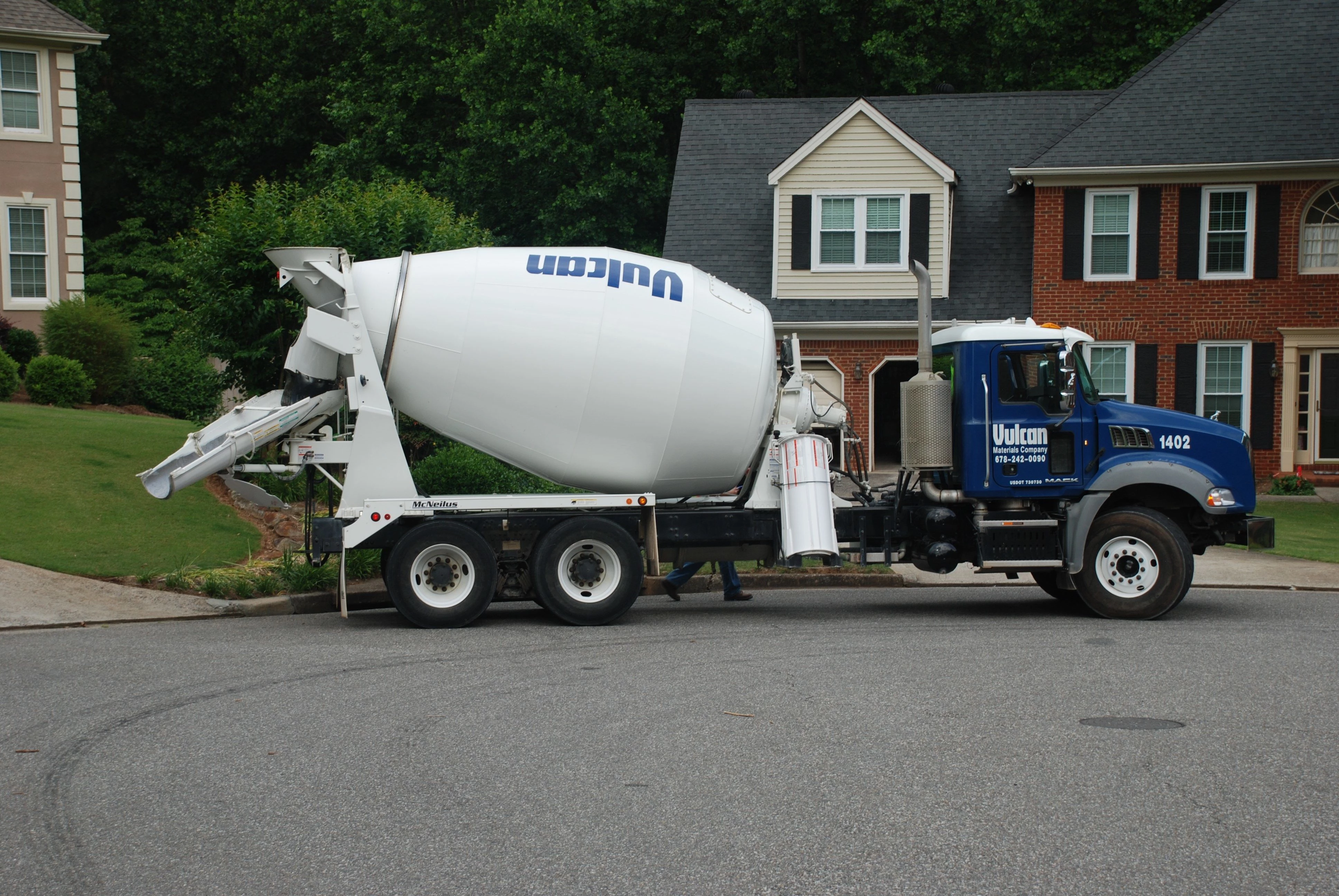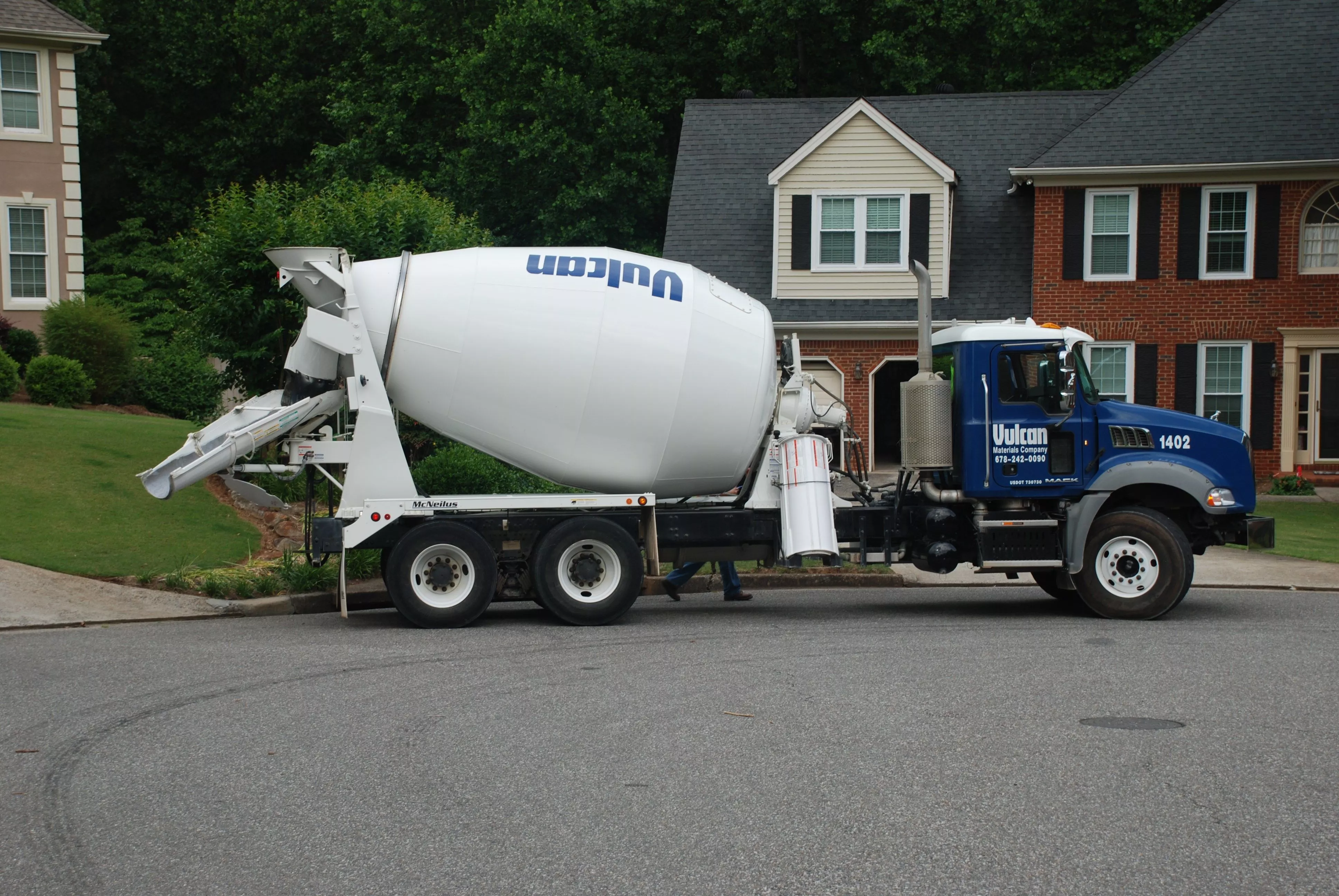A standard cement truck can carry around 8 to 10 cubic yards of concrete. The exact capacity may vary based on the truck’s size.
Cement trucks are essential for transporting concrete to construction sites efficiently. They ensure the mix remains consistent and ready for use upon arrival. These trucks save time and labor, making them invaluable in construction. Cement trucks come in various sizes, but the average capacity is typically between 8 to 10 cubic yards.
This range allows for flexibility depending on project needs. Understanding the capacity of a cement truck helps in planning and budgeting for construction projects. Properly estimating the required amount of concrete ensures smooth operations and reduces waste.

Introduction To Cement Trucks
Cement trucks play a vital role in construction. They deliver ready-mix concrete to construction sites. These trucks ensure the concrete remains in a liquid state. This helps in easy and quick pouring at the site.
Purpose Of Cement Trucks
The primary purpose of cement trucks is to transport fresh concrete. They have a rotating drum that keeps the concrete mixed. This prevents it from hardening before reaching the site.
- Transport fresh concrete
- Keep concrete mixed and ready for use
- Ensure timely delivery to construction sites
Cement trucks come in various sizes. They carry different amounts of concrete, typically measured in cubic yards.
Common Uses
Cement trucks are used in many construction projects. Here are some common uses:
- Building foundations
- Road construction
- Bridges and overpasses
- Sidewalks and driveways
These trucks ensure a continuous supply of fresh concrete. This is crucial for the quality and durability of constructions.
| Use | Description |
|---|---|
| Building foundations | Provides strong support for structures. |
| Road construction | Ensures smooth and durable roads. |
| Bridges and overpasses | Supports heavy loads and traffic. |
| Sidewalks and driveways | Provides safe and durable walking surfaces. |
Understanding the purpose and common uses of cement trucks can help in planning construction projects. It ensures efficient use of resources and timely completion.
Cement Truck Capacity
Understanding the capacity of a cement truck is important for construction projects. The amount of cement a truck can carry impacts the efficiency of your work.
Standard Size
Most cement trucks have a standard size. A typical truck can carry about 8 to 10 cubic yards of concrete. This size is suitable for most small to medium construction projects.
- 8 cubic yards – average capacity
- 9 cubic yards – common for many trucks
- 10 cubic yards – maximum for standard trucks
Variations In Capacity
Not all cement trucks are the same. Some trucks have different sizes to meet various needs.
| Truck Type | Capacity (Cubic Yards) |
|---|---|
| Mini Truck | 4-5 |
| Standard Truck | 8-10 |
| Large Truck | 11-14 |
Mini trucks are great for small projects. Large trucks are perfect for big jobs. Choose the right truck based on your project’s needs.
Measurement Of Cement Yards
Understanding the measurement of cement yards is crucial for construction projects. Accurate measurements ensure you get the right amount of cement. This helps in efficient planning and cost management.
Definition Of A Yard
A yard is a unit of measurement. It is used to measure length. One yard is equal to three feet or 36 inches. In construction, yards are often used to measure volume. Specifically, they measure the volume of materials like cement.
Calculating Cement Volume
Calculating the cement volume in a truck is essential. Typically, cement trucks carry cement in cubic yards. To calculate the volume, you need to know the dimensions of the truck’s drum.
| Truck Size | Volume in Cubic Yards |
|---|---|
| Small Truck | 4 – 6 cubic yards |
| Medium Truck | 6 – 8 cubic yards |
| Large Truck | 8 – 12 cubic yards |
To find the volume of cement in a truck, use this formula:
Volume = Length × Width × Height
For example, if a truck’s drum has a length of 10 feet, a width of 5 feet, and a height of 4 feet, the volume in cubic yards is:
Volume = 10 × 5 × 4 / 27 = 7.41 cubic yards
This formula helps in making precise calculations. It ensures you order the right amount of cement.
- Small projects: Use trucks with 4-6 cubic yards.
- Medium projects: Use trucks with 6-8 cubic yards.
- Large projects: Use trucks with 8-12 cubic yards.
These guidelines help in choosing the right truck size. This ensures efficient and cost-effective cement usage.

Factors Affecting Capacity
Understanding the capacity of a cement truck involves several factors. These factors can change how much concrete the truck can carry. Truck design and cement type are two key elements.
Truck Design
The design of the cement truck impacts its capacity. Modern trucks can carry more than older models. The drum size is a significant factor. A larger drum means more concrete can fit inside. Trucks usually hold between 8 to 14 cubic yards of concrete.
Different trucks have different axle configurations. More axles mean better weight distribution. This allows the truck to carry more concrete. The truck’s overall weight also matters. Heavier trucks may carry less concrete due to weight limits on roads.
Here is a table showing different truck designs and their capacities:
| Truck Design | Capacity (Cubic Yards) |
|---|---|
| Standard Truck | 8-10 |
| Advanced Truck | 10-14 |
Cement Type
The type of cement also affects the truck’s capacity. Some cement types are heavier than others. Portland cement is a common type. It is heavier and denser. Trucks carrying Portland cement may carry less volume.
Another type is lightweight cement. This type is less dense. Trucks can carry more of it by volume. The mix of cement also matters. A wetter mix is heavier and takes up more space.
Here are some common cement types and their properties:
- Portland Cement: Dense, heavier, lower volume capacity
- Lightweight Cement: Less dense, lighter, higher volume capacity
Understanding these factors can help in planning your concrete needs better.
Loading And Unloading Processes
The loading and unloading processes of a cement truck are crucial. These steps ensure efficient delivery and quality of the cement. Proper techniques prevent delays and maintain safety standards.
Loading Techniques
Loading a cement truck involves precise steps. The truck positions under the loading hopper. Cement and water enter the truck drum through a chute. Operators monitor the mix ratio carefully. They use calibrated systems to ensure the correct mix of cement, water, and aggregates. The drum rotates continuously to mix the materials evenly. This process typically takes a few minutes. Loading must be quick to avoid setting of the mix.
Unloading Procedures
Unloading a cement truck also requires precision. The truck arrives at the construction site ready to pour. The drum rotates to keep the cement mixed. Operators position the truck near the pour site. They extend the chute to direct the cement flow. The drum’s rotation speed adjusts to control the pour rate. Cement flows down the chute into the designated area. Workers spread and level the cement as it pours. Unloading must be efficient to prevent hardening in the drum.
Efficiency And Time Management
Understanding the efficiency and time management of cement trucks can save money. Knowing how many yards a cement truck can hold is crucial. This knowledge helps in planning and managing construction projects effectively.
Optimizing Delivery
To optimize delivery, consider the capacity of the cement truck. Most standard cement trucks can carry between 8 to 10 yards of concrete. Using this information helps in planning the number of trips required. This reduces idle time and increases productivity.
| Truck Capacity (Yards) | Number of Trips | Time Saved (Hours) |
|---|---|---|
| 8 Yards | 3 Trips | 1 Hour |
| 10 Yards | 2 Trips | 2 Hours |
Using the right truck capacity helps in saving time. It also ensures the project stays on schedule.
Minimizing Waste
Minimizing waste is another critical aspect. Ensure only the required amount of cement is mixed. This reduces excess and prevents wastage. Proper planning helps in achieving this goal.
- Calculate the exact amount of concrete needed.
- Communicate effectively with the supplier.
- Monitor the mixing process closely.
By following these steps, you can minimize waste. It also helps in reducing costs and environmental impact.
Common Challenges And Solutions
Understanding how many yards fit in a cement truck is crucial. But there are common challenges that can arise. Let’s explore these issues and their solutions.
Overloading Issues
Overloading a cement truck can cause serious problems. Here are some key challenges:
- Damage to the truck: Excess weight can harm the truck.
- Spillage: Overloaded trucks may spill cement on the road.
- Safety risks: Too much weight can make the truck unstable.
Solutions to overloading include:
- Monitor the load carefully using scales.
- Train drivers on proper loading techniques.
- Use sensors to alert if the truck is overloaded.
Spillage Prevention
Spillage during transport is a common issue. This can lead to:
- Wasted cement: Spillage means lost material.
- Environmental hazards: Spilled cement can harm the environment.
- Increased costs: Cleaning up spills is costly.
Solutions to prevent spillage include:
- Secure the load with proper covers and seals.
- Regularly inspect the truck for leaks.
- Train staff on correct loading and unloading methods.
By addressing these challenges, you can ensure a smoother, safer delivery process.

Future Trends In Cement Transportation
The cement industry is evolving rapidly. New technologies and sustainability efforts are shaping future trends. These advancements aim to enhance efficiency and reduce environmental impact.
Technological Advances
Technological innovation is transforming cement transportation. Automated trucks and smart logistics are leading the change. Automated trucks require less human intervention. This improves delivery times and reduces costs.
Smart logistics use data analytics. They optimize routes and schedules. This minimizes fuel consumption and increases efficiency. GPS tracking systems ensure real-time monitoring of cement deliveries.
Another breakthrough is drone technology. Drones monitor construction sites. They provide accurate data on cement requirements. This reduces waste and ensures timely delivery.
Sustainability Initiatives
Sustainability is a priority in the cement industry. Companies focus on reducing their carbon footprint. They adopt eco-friendly practices and materials.
One key initiative is the use of electric cement trucks. These trucks produce zero emissions. They help in reducing air pollution. Hybrid trucks are also gaining popularity. They combine electric and diesel power. This reduces fuel consumption and emissions.
Another important trend is the use of recycled materials. Companies recycle concrete and other construction waste. This reduces the demand for new materials. It also decreases the environmental impact of cement production.
Green certifications are becoming common. Companies seek certifications like LEED. This shows their commitment to sustainability. It also improves their market reputation.
Frequently Asked Questions
How Many Yards Does A Cement Truck Hold?
A standard cement truck typically holds 8 to 10 cubic yards. The exact capacity can vary by truck size.
What Is The Volume Of A Cement Truck?
A cement truck usually carries between 8 and 10 cubic yards. This volume is sufficient for most construction needs.
How Much Concrete Can A Truck Deliver?
A cement truck can deliver up to 10 cubic yards. This amount is adequate for small to medium projects.
How Many Cubic Yards In A Concrete Truck?
A concrete truck generally carries 8 to 10 cubic yards. This range covers most residential and commercial projects.
Conclusion
Understanding how many yards a cement truck holds is crucial for construction projects. With this knowledge, you can efficiently plan and order the right amount of concrete needed. It’s essential to work closely with suppliers to ensure a successful and cost-effective project completion.
Proper planning leads to project success.

Leave a Reply
You must be logged in to post a comment.